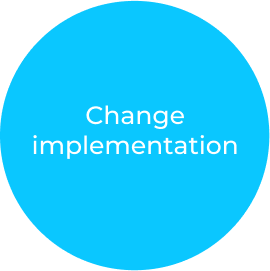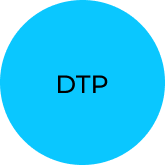SERVICES
Translation
Translation is the process of translating text from one language into another. The approach in each translation project depends on why a given piece of content was created in the first place. There is presales content for convincing potential customers to buy a product. There is postsales content for providing instructions for use, once a customer has actually purchased a product. There is legal content that provides the necessary legal framework for commercial transactions. Then there is software, which is a product and content at the same time – and many others.
While each type of content requires a certain expertise in the content creation stage, the same is true for the translation stage.
There are three basic pillars in every translation project at GTU: Translation, Editing and Quality assurance. We call this the 4-eyes principle, where the translator’s work is edited by a second linguist and subsequently checked with the help of a tool for things like inconsistencies, terminology adherence and spelling.
SERVICES
Transcreation
Transcreation is a newly coined expression meaning something like creative translation. Companies decide to use transcreation services when they need to adapt their messaging to the cultural values in a market they are trying to enter. Without this kind of adaptation, the messaging – which most likely was crafted in endless sessions by marketing personnel – would most likely be ignored or misunderstood in the targeted country. In other words, customers are less likely to buy a product if they don´t understand the message.
A subset of the Transcreation service is product name research. This activity is performed by in-country linguists who make sure that proposed product names do not have a negative connotation in the target country.
Another important component of the Transcreation service is the tonality analysis. In this stage, linguists define in conjunction with our clients who potential customers are, how they should be addressed and what kind of messaging should be avoided.
SERVICES
Subtitling
Subtitling is the process of adding text to any audio-visual media to express the message that is being spoken. Essentially, subtitles are a written abridgement of the spoken audio. They allow people to read and understand what is being said, even if they don’t understand the language of the speakers. And without subtitles it would not be possible to grasp the subtleties contained in verbal communications.
Subtitles can basically be added to anything that includes moving pictures, but are most commonly used on film and television, promotional and corporate videos and increasingly becoming more popular on YouTube and internet videos
Subtitles are typically displayed on 1 or 2 lines of text, in 2-4 second bursts. They are a condensed, summarized version of what is being said. Good subtitles should allow the audience to comfortably read and understand them, whilst still being able to consume the visuals.
SERVICES
Linguistic Testing
Linguistic testing is a subset of the non-functional testing, which is used to evaluate the context and language attribute of a software product for a particular area or audience. It helps to make the software culturally appropriate by testing aspects like context, grammar, language standards, rules, and regulations.
Moreover, with the assistance of linguistic testing, the testing team can make the software or the website of global quality and ensure that it caters to the requirements of people from a specific culture.
Apart from the functional and non-functional quality, a software product must also adhere to the localization and linguistic standards, to fulfill the needs and requirements of the users, belonging to a specific cultural background, territory or area. If ignored, these aspects can impact the company’s value in the local market. Therefore, organizations can perform linguistic testing with the assistance of the above stated practices, or they can outsource the 3rd party for the task, to ensure flawless and accurate context and language in the software product.
SERVICES
Ancillary Services
There are many ancillary services that will ensure the success of your project, some of which are Glossarization, DTP, Style guide development, Alignment.
Glossarization refers to identifying and documenting key terminology, which then will be translated and used consistently throughout all your communications. Companies choose this service because they want to avoid brand erosion by inconsistent messaging, which may confuse their customers.
DTP (Desktop Publishing), also called type setting, is the process of converting text into a print-ready publication which has visuals and is properly formatted. GTU provides multilingual DTP.
A style guide is useful for documenting certain aspects of language which can lead to mistakes or inconsistencies. Some examples are the use of currency symbols, measurement units, addressing the target audience formally vs. informally as well as inclusive language.















